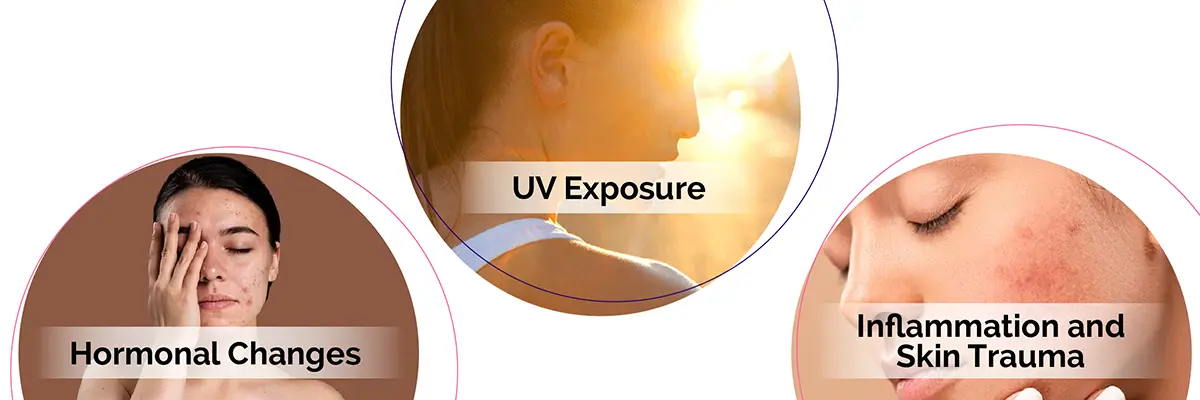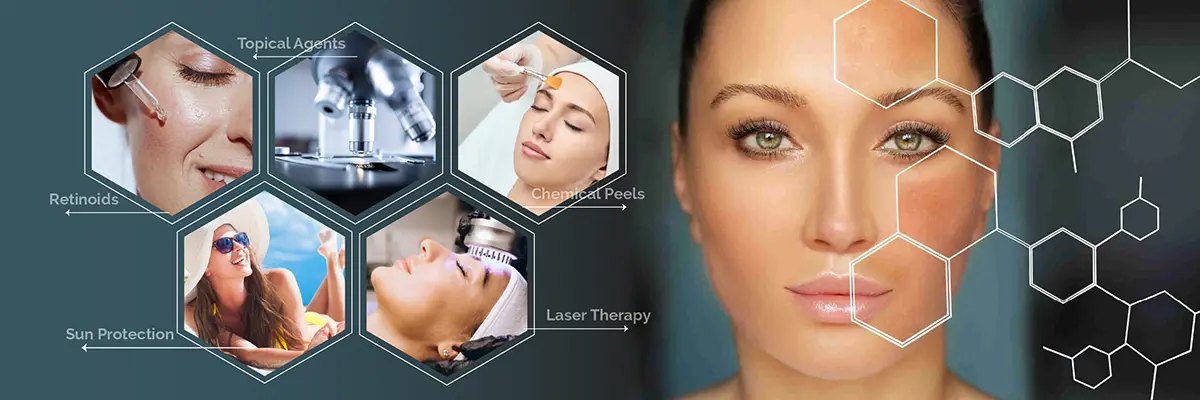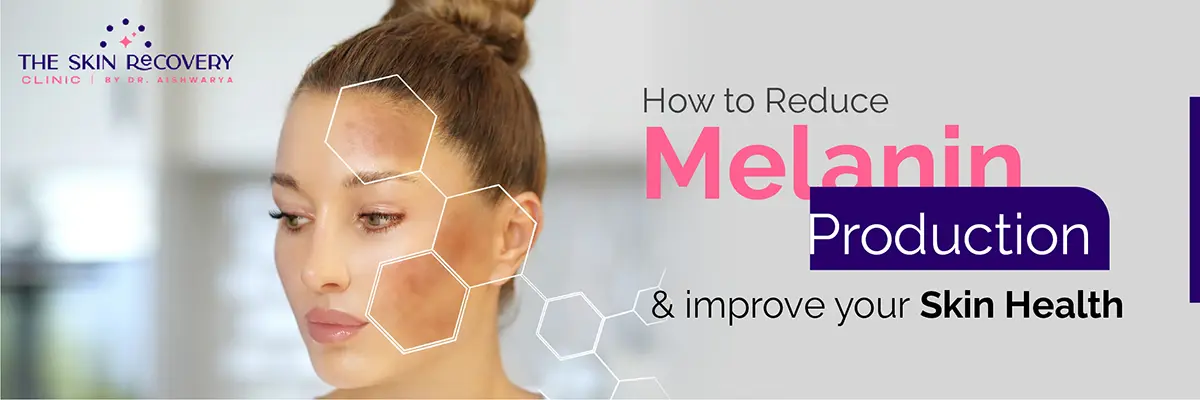How To Reduce Melanin Production & Improve Your Skin Health
Understanding the complex processes underneath the skin's surface is essential to glowing, healthy skin. Controlling the generation of melanin is critical to maintaining ideal skin health. The pigment that gives our skin its colour, melanin, is essential for shielding our skin from damage from ultraviolet (UV) rays. On the other hand, an imbalance in melanin production can result in hyperpigmentation, among other skin issues.
Understanding Melanin:
Melanin is produced by melanocytes, specialized cells located in the epidermis, the outermost layer of the skin. There are three main types of melanin:
- Eumelanin, responsible for brown and black pigments
- Pheomelanin is responsible for red and yellow pigments
- Neuromelanin found in the brain
Melanin production is stimulated by exposure to sunlight, particularly UV rays.
Factors Influencing Melanin Production:

1. UV Exposure:
- UV rays stimulate melanocytes to produce melanin as a defence mechanism against potential DNA damage.
- Prolonged and excessive sun exposure can lead to an overproduction of melanin, resulting in sunspots, freckles, and uneven skin tone.
2. Hormonal Changes:
- Hormonal fluctuations, especially during pregnancy or while taking contraceptives, can influence melanin production.
- This may lead to conditions such as melasma, characterized by dark patches on the skin.
3. Inflammation and Skin Trauma:
- Inflammatory skin conditions and trauma, such as acne or wounds, can trigger melanin production as part of the skin's healing process.
- Post-inflammatory hyperpigmentation is common, causing dark spots to linger after the initial issue has resolved.
Strategies to Reduce Melanin Production:

1. Sun Protection:
The cornerstone of any effective skincare routine is sun protection. Use a broad-spectrum sunscreen with at least SPF 30, and reapply every two hours, especially when exposed to sunlight for an extended period.
2. Topical Agents:
- Incorporate skincare products with ingredients that inhibit melanin production, such as niacinamide, vitamin C, and alpha arbutin.
- These ingredients suppress the activity of tyrosinase, an enzyme crucial for melanin synthesis.
3. Chemical Peels:
- Chemical peels, when administered by a skincare professional, can help exfoliate the skin and reduce hyperpigmentation.
- Ingredients like glycolic and salicylic acid are commonly used in chemical peels to promote skin renewal.
4. Retinoids:
- Retinoids, vitamin A derivatives, can grow skin cell turnover and fade dark spots over time.
- Start with a lower concentration and gradually increase as your skin builds tolerance.
5. Laser Therapy:
- Laser treatments, such as laser resurfacing and intense pulsed light (IPL) therapy, can target melanin and reduce pigmentation issues.
- Consult a dermatologist to determine the most suitable laser treatment for your skin type and concerns.
Achieving balanced and radiant skin involves a multifaceted approach that addresses internal and external factors. Understanding the science of melanin production and implementing targeted skin care strategies can reduce hyperpigmentation and improve your skin's overall health. Consistency is critical, and it's crucial to consult a skincare professional to tailor a routine that meets your unique needs.

